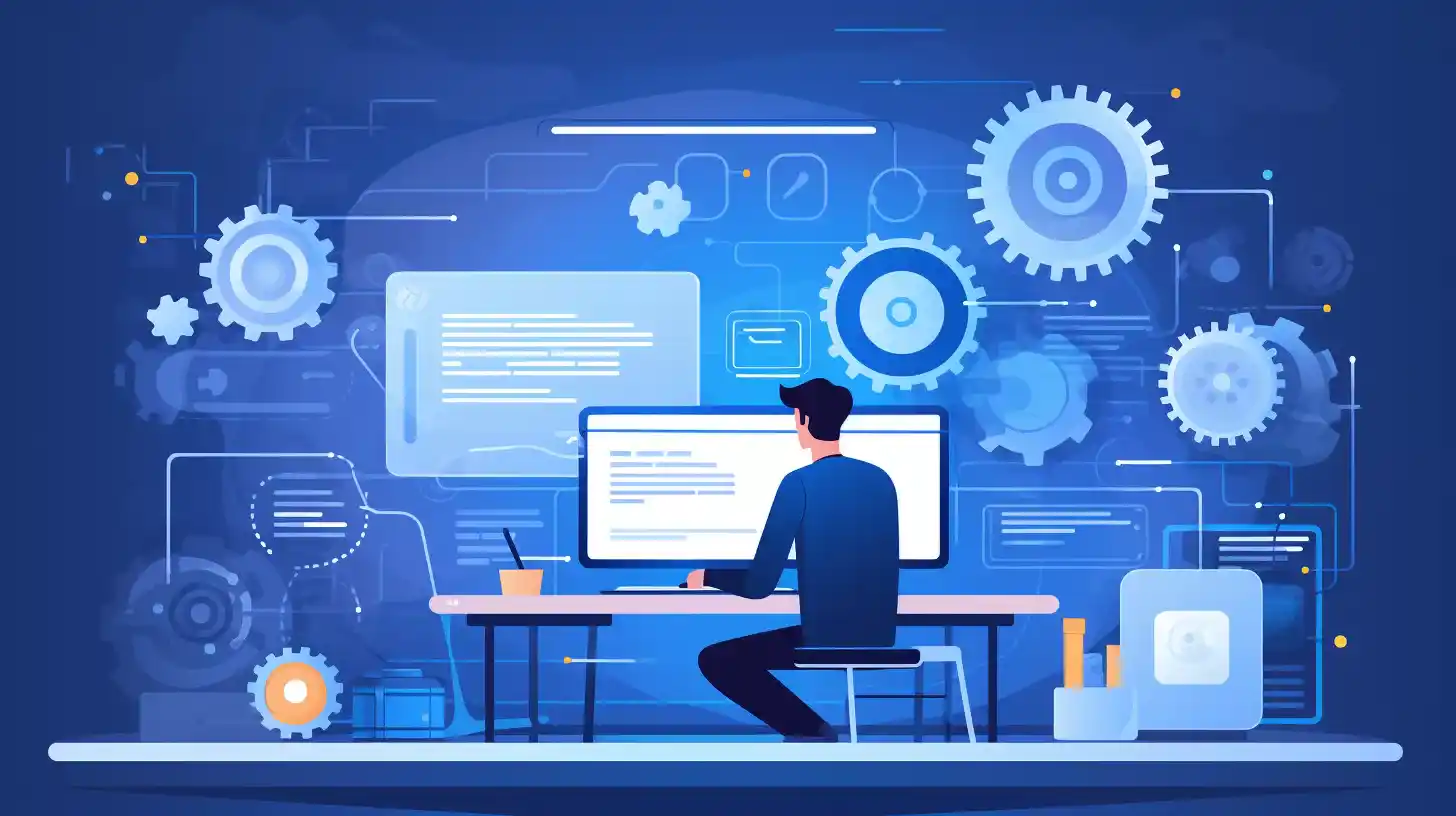The Amazing Power of AI in Web Design: How to Enhance Your User Experiences
Table of Contents
In today’s online world, websites are like virtual shops, and how you feel when you visit them matters a lot. That’s where Artificial Intelligence (AI) steps in – it’s like a superhero for web design, making websites easier to use and more fun.
In this blog, we’ll talk about how AI is changing web design, making things simpler and more enjoyable for you. So, get ready to explore how AI and web design work together to create a better online experience for everyone. Let’s dive in!
Why Does Website Design Need to Care About User Experience?
Website design needs to prioritize user experience because it directly impacts how people interact with a website. When users visit a site, they expect it to be easy to navigate, visually appealing, and responsive.
A positive user experience keeps visitors engaged, encourages them to explore further, and increases the likelihood of them returning in the future. Additionally, satisfied users are more likely to recommend the website to others, contributing to its success.
Ultimately, prioritizing user experience in website design not only enhances customer satisfaction but also drives traffic, improves conversion rates, and strengthens the overall reputation and success of the website.
Experts of a web development company Austin suggest that prioritizing user experience is crucial for the success of any website.
By creating an intuitive, visually appealing, and responsive design, businesses can keep users engaged, encourage exploration, and build a loyal customer base. A positive user experience not only boosts satisfaction but also impacts traffic, conversions, and overall brand reputation.
How Does AI Make Websites Better for Users?

Artificial Intelligence (AI) plays a crucial role in enhancing websites for users by leveraging advanced algorithms and data analysis to personalize and optimize the user experience. Here’s how AI makes websites better for users:
Personalization:
AI algorithms analyze user behavior, preferences, and demographics to deliver personalized content, product recommendations, and tailored experiences. This personalized touch increases user engagement and satisfaction.
Improved User Interface (UI):
AI-driven design tools can analyze user interactions and preferences to create intuitive and visually appealing UI elements. This results in easier navigation, clearer layouts, and a more enjoyable browsing experience.
Chatbots and Virtual Assistants:
AI-powered chatbots provide instant assistance to users, answering questions, providing recommendations, and resolving issues in real time. This is particularly beneficial for e-commerce sites, educational platforms, and consulting websites, as it improves customer service and enhances user satisfaction by offering immediate support.
Predictive Analytics:
AI algorithms analyze vast amounts of data to predict user behavior, such as search patterns, purchase decisions, and content preferences. This enables websites to anticipate user needs and provide relevant content or suggestions before users even realize they need them.
Content Optimization:
AI tools analyze content performance, user feedback, and market trends to optimize website content for maximum impact. This includes improving readability, SEO, and relevance, resulting in a more engaging and informative experience for users.
What Tools Does AI Use to Make Websites Easier to Use?

Artificial Intelligence (AI) utilizes a variety of tools and techniques to make websites easier to use, providing users with seamless and intuitive experiences. Here are some key tools AI employs for this purpose:
1. Personalized User Experiences:
AI analyzes user behavior, providing insights into preferences and habits. Tools like Google Analytics and Mixpanel track user interactions, tailoring content recommendations based on browsing history.
Additionally, chatbots powered by AI, such as Dialogflow or IBM Watson Assistant, offer quick customer assistance, making websites more user-friendly. These virtual assistants guide users through processes, recommend products, and address concerns efficiently.
2. Chatbots and Virtual Assistants:
AI-driven chatbots handle common queries, resolve issues, and provide 24/7 support. Tools like Chatfuel, LiveChat, or Intercom enhance the user experience by offering real-time assistance.
Whether it’s answering frequently asked questions or guiding users through complex tasks, chatbots streamline interactions and improve overall satisfaction.
3. Natural Language Processing (NLP):
NLP allows chatbots to understand and respond to natural language queries. Frameworks like spaCy, NLTK, or BERT analyze user input, extracting meaning and context.
This functionality enhances search functionality, making it easier for users to find relevant content. Whether it’s a product search or a specific topic, NLP ensures accurate results.
4. User Behavior Analysis:
AI algorithms continuously analyze user interactions. Insights from this analysis inform design decisions, leading to better layouts and navigation. Tools like Hotjar, Crazy Egg, or Mouseflow provide heatmaps, session recordings, and user flow analysis.
By understanding how users engage with a website, designers can optimize the user experience. Whether it’s adjusting button placement or refining menu structures, AI-driven insights drive improvements.
Enrolling in a user experience research course can further empower designers with the knowledge and skills needed to harness the full potential of these insights.
5. A/B Testing Optimization:
AI automates A/B testing, comparing different versions of web elements. Marketers and designers can test variations of headlines, images, or calls to action.
Platforms like Optimizely, VWO, or Google Optimize identify high-performing variations, optimizing conversion rates. This data-driven approach ensures that changes positively impact user engagement and conversion.
6. Security:
AI plays a critical role in website security. It detects anomalies and potential threats, safeguarding user data. Tools like Cloudflare, Imperva, or Sucuri monitor traffic patterns, identify suspicious activity, and prevent attacks.
Whether it’s identifying unusual login attempts or monitoring for malicious bots, AI ensures a secure browsing experience. By proactively addressing security risks, websites protect both users and their information. Additionally, integrating cookie consent mechanisms helps ensure that user data is handled in compliance with privacy regulations.
7. E-Commerce Recommendations:
For e-commerce websites, AI analyzes user preferences and browsing history. Based on this data, personalized product recommendations are generated. Platforms like Salesforce Commerce Cloud, Dynamic Yield, or Barilliance use collaborative filtering and machine learning to suggest related items. For career advice, a specialized Career Coaching Website can offer tailored guidance based on an individual’s unique profile and career goals.
Whether it’s suggesting complementary products or highlighting popular choices, these recommendations improve sales and customer satisfaction. Users appreciate tailored suggestions that align with their interests.
8. Dynamic Content Generation:
AI-powered writing tools create tailored content dynamically. Whether it’s blog posts, product descriptions, or landing pages, AI adapts to individual user needs. Frameworks like OpenAI’s GPT-3, Contentful, or Sitecore automate content generation.
By analyzing user behavior and context, these tools generate fresh and relevant information without manual effort. This dynamic approach keeps users involved and informed.
Limits of AI in Improving Website User Experience

While AI brings remarkable advancements, it also faces certain limitations:
- Lack of Creativity: AI excels at data-driven tasks but struggles with creative intuition. Designing unique, aesthetically pleasing layouts remains a challenge.
- Bias and Fairness: AI algorithms learn from existing data, which may contain biases. Ensuring fairness and avoiding discriminatory outcomes is crucial.
- Complex Problem Solving: AI can’t replace human intuition for complex, context-dependent decisions. It lacks the holistic understanding that designers possess.
- User Context: AI may misinterpret user intent due to limited context awareness. Understanding cultural nuances and individual preferences remains elusive.
What’s Next for AI in Web Design? Will It Take Over from Human Designers?
The future holds exciting possibilities:
- Collaboration, Not Replacement: AI will augment human creativity. Designers and AI will collaborate, leveraging each other’s strengths.
- Automated Layouts: AI-driven layout generation will streamline repetitive tasks. Designers can focus on high-level concepts while AI handles details.
- Hyper-Personalization: AI will create hyper-personalized experiences. Dynamic content, tailored recommendations, and adaptive interfaces will thrive.
- Ethical AI: Strides will be made in addressing bias, transparency, and accountability. Responsible AI practices will be central to design workflows.
Conclusion
In the ever-changing world of web design, AI and human creativity work together. They create a future where websites are efficient, personalized, and innovative. Designers team up with AI to discover new ideas and make websites that users love.
It’s like a magical mix of computer smarts and human imagination, taking web design to exciting new places!
Featured Insights
 Integrating Real-Time Weather Data into Your Travel and Navigation App
Integrating Real-Time Weather Data into Your Travel and Navigation App The Future is Now: AI and ML Technologies Reshaping Healthcare
The Future is Now: AI and ML Technologies Reshaping Healthcare Introduction to Digital Twin Technology in Manufacturing with Unprecedented Efficiency and Innovation
Introduction to Digital Twin Technology in Manufacturing with Unprecedented Efficiency and Innovation Adobe’s Firefly AI: New Tools for Photoshop and Illustrator
Adobe’s Firefly AI: New Tools for Photoshop and Illustrator Introducing Meta Imagine Me: Your Digital Doppelganger
Introducing Meta Imagine Me: Your Digital Doppelganger AI in Gaming is Transforming the Industry
AI in Gaming is Transforming the Industry